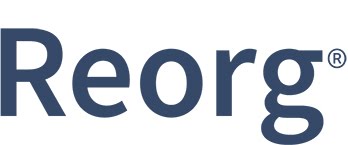Pain? Not so much in the liquid credit markets.
Before I begin, I would like to express my sympathies for all those affected by the terrible natural disasters that have affected Japan in the past week. My prayers go out to all those who have been directly affected or who have friends and family in the area. For those interested in helping, you can donate directly on the Red Cross site here: Japan Earthquake and Pacific Tsunami Relief
How has this pullback in the global equity markets affected the domestic HY markets? Not terribly much as measured by the HY15.
For reference: Here's the post: "Credit markets are in a bubble" Now, to me that chart shows a little bit of pain. Some of the equity and mezzanine tranches have been hit harder, and rightly so:
The above chart is the price of the equity tranche of the HY15. For those not aware, nearly all of the Markit indices are tranched to give investors more places to place their bets. The HY indices are tranched slightly differently than the IG indices:
- HY has a 0-15% equity tranche, a 15-25% mezzanine tranche, and a 25-35%, and 35-100% tranche
- IG has 0-3% equity tranche, a 3-7% mezzanine tranche, and a a 7-15% and 15-100% tranche
These percentages are essentially loss buffers protecting the tranche above you. Let's say you are INCREDIBLY bullish on the constituents of the HY15 index and expect no defaults through 2015. Well you would then buy the 0-15% equity tranche at 55 and get par back in 12/20/15. If you were wrong, and there were a number of defaults and low recovery rates, you may get back 0. If depends on the number of defaults and the loss assumptions to figure out what you are going to get back. You can view all these tranches on Bloomberg using the CDOT function.
With that said, yes, there has been some pain in the liquid HY credit markets. Some of the more widely traded names (Charter, CIT, Freescale, Harrah's, HCA, etc) are down a couple of points here and there. But nothing like this:
This is an equity chart of 9501 JP or Tokyo Electric. Obviously that is a unique chart given the nuclear issues going on in Japan, but on the whole, the market that has been hit the most, and consequently, the markets value investors like you and me should be spending our time is Japan.
Yesterday, on the Distressed Debt Investors Club forum, I told readers I was starting to buy a certain Japanese equity. As the day went, and panic increased throughout the day (as measured by the number of Zero Hedge postings and movements in the Yen), I was bought more and more of this one company, taking it to nearly a full position, while nibbling on a number of other companies in Japan.
Some will call me crazy. Some will say I do not have all the facts. It is always uncomfortable to buy things in free fall. Remember RIG during the BP disaster? On the DDIC investor forum I wrote, on June 10, 2010, "I am coming up with a value of $60-$100/share for RIG" when the stock was trading at $45/share and oil was spewing into the Gulf. We know how that turned out.
So for those interested in investing in Japan, here is what I would suggest doing. We are going to do it the Walter Schloss way.
- Download all companies in the TOPIX (a capitalization weighted index of all companies listed on the Tokyo Stock exchange)
- Remove all companies trading at Price to Book above 1.2x
- Remove all companies that do not have an operating history going back 10 years
- Remove all companies that have a Debt to Capital above 20%
- Start with A...
Some of these companies are MIRACULOUSLY cheap. And in some cases this is rightly so. Japanese companies are notorious for printing ROEs lower than their cost of capital and hence a large portion of the index will trade below book. But, if you take the next few days, and do the exercise above, and pick 5-10 companies and allocate some capital to each of them, I think in a few years you will look back on this experience joyfully.
Inevitably, I will get emails related to this post saying I am crazy myself. That is fine. I may be wrong. I will not always be right. But if I buy WELL capitalized companies, with little to no debt, trading at a large discount to book, with P/Es in the single digits I feel like my downside is protected in the off chance of events worse than what we've seen in the past few days. Remember, value investing is about focusing on the downside. This exercise accomplishes that in an area where there are many questions, and investors are selling irrationally.
And email me any other interesting ones you find. I'm starting back with the A's again tonight.




3 comments:
I'll start with the Z's and we can meet in the middle.
Sorry is there a screener that can filter out some of these criteria or are you using a Bloomberg?
Sorry for the newb question.
there is a glass company trading at 10x...i'll leave you to work the rest out
Post a Comment